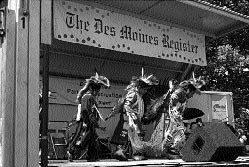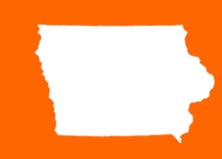

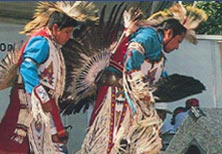
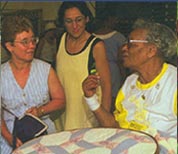
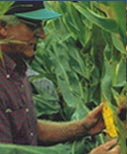

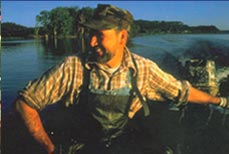
| Resources | ||||||
|
||||||
| Learning Guide |
| 1. Social Studies |
| 2. Language Arts |
| 3. Music |
| 4. Art |
| 5. Special: Multi-Disciplinary, Culminating Activities |
Introduction
|
As part of that celebration, some 150 Iowa musicians, craftspeople, storytellers, radio announcers, farmers, cooks, doctors, basketball players, teachers, scholars, and state officials participated in the Smithsonian Institution’s Festival of American Folklife on the National Mall of the United States in Washington, D.C. They demonstrated various aspects of Iowa’s cultural traditions to more than 1.2 million visitors, and received a great deal of media attention—generating some 600 newspaper articles and 50 television and radio segments. This living exposition of Iowa’s cultures was remounted on the State Capitol Grounds in Des Moines in August 1996. Over 85,000 people visited this Festival of Iowa Folklife. In addition, the festivals generated an Iowa Public Television documentary, Iowa Folks and Folklife, and a Smithsonian Folkways music recording, Iowa State Fare. Both festival programs, the research and documentation upon which they were based, the television program, and the recording provided a survey of the contemporary heritage of Iowa communities. They demonstrated, in dramatic fashion, the fact that the language, music, arts, cultural activities, stories, and history that have defined a way of life in Iowa are found in homes, communities, places of work, and places of worship throughout the state. This learning guide is an attempt to extend the reach of the festivals and other materials to students—the next generation of Iowans. Young people need to know about and understand the cultural traditions that have been nurtured upon this soil by previous generations, and find their own connections to them. Teachers and elders can help students as the latter discover the vitality of the folklife around them, and figure out how to make it their own. |
Previous |
| | Next |
| smithsonian institution |
 |
pioneer hi-bred international, inc. |
iowa sesquicentennial commission |
 |
iowa arts council |
